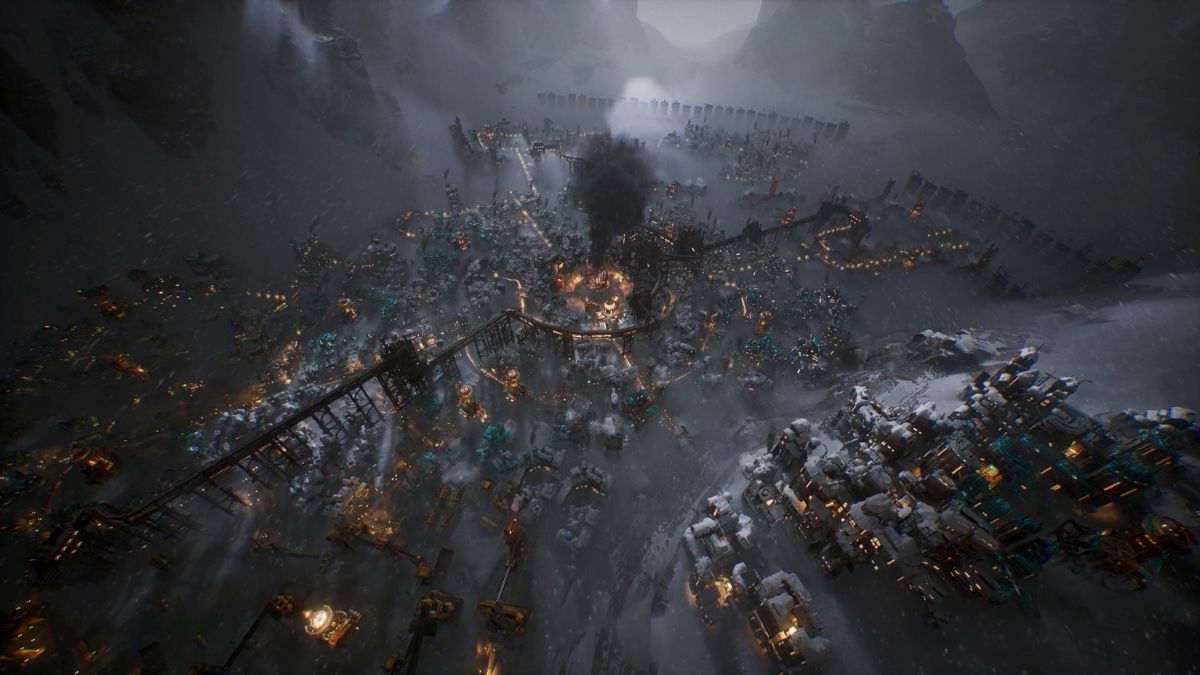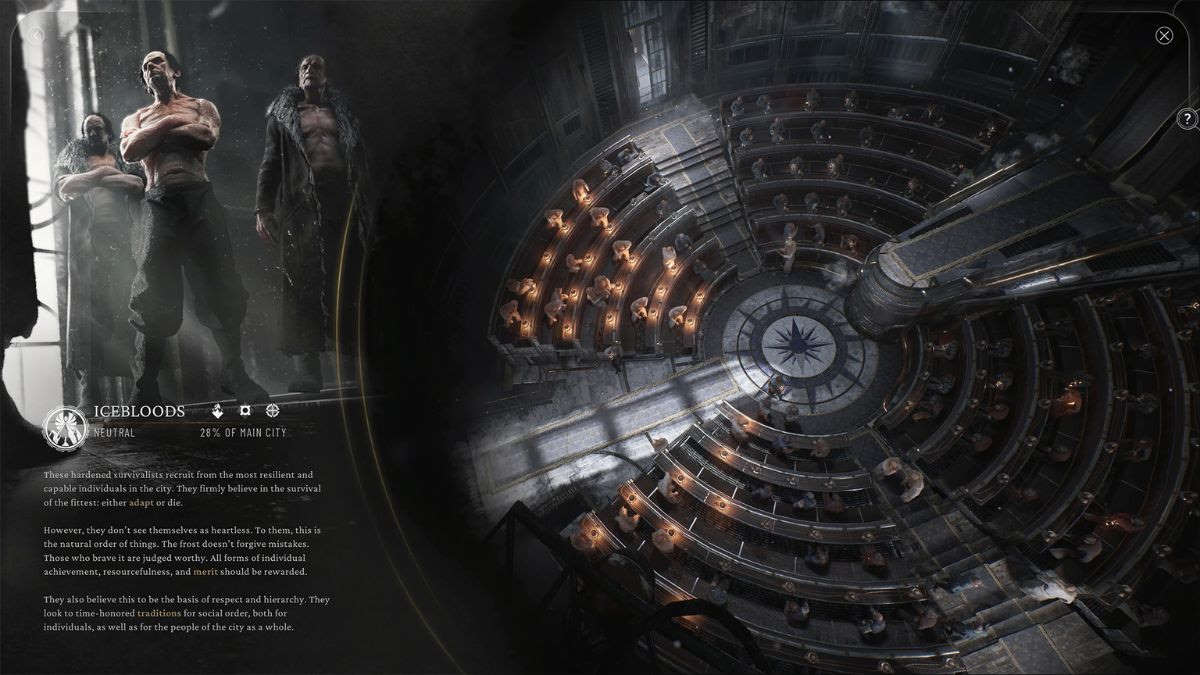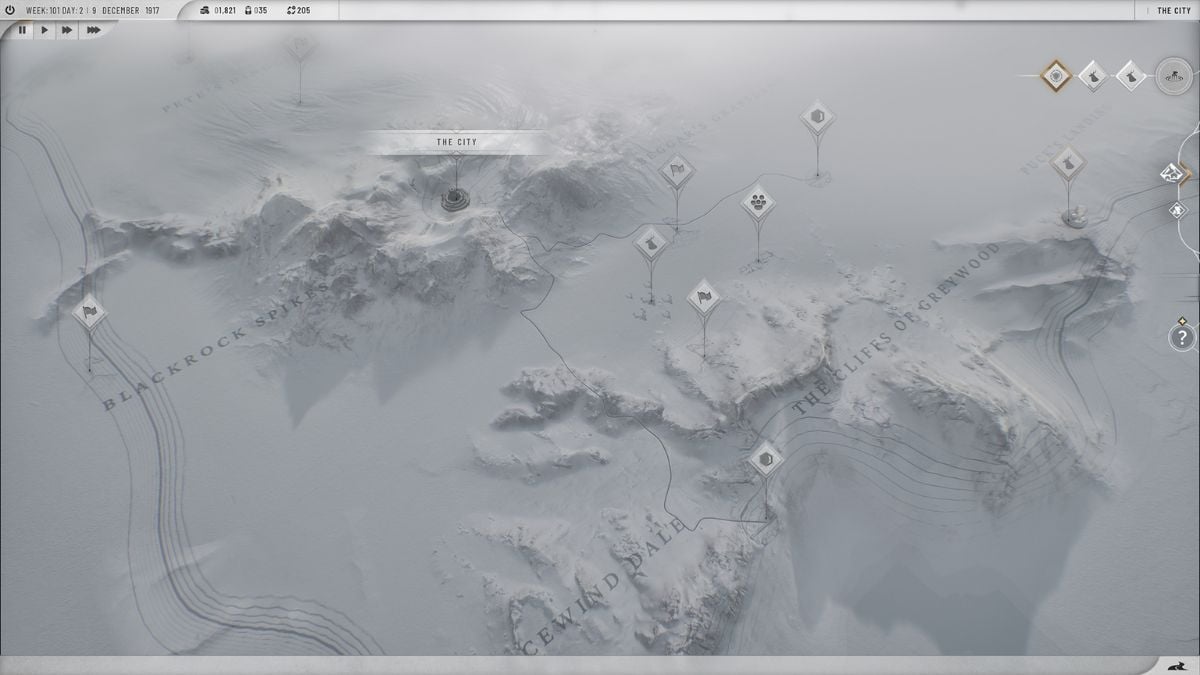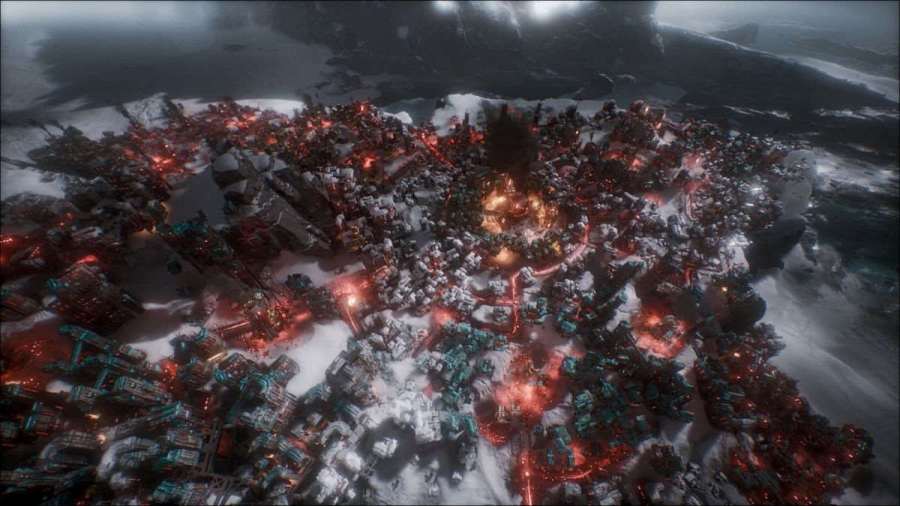Cold despair and the fight for survival were the themes of the original Frostpunk, so what can the sequel do that's not already been seen? Going big is certainly one thing everyone expects. Let's compare Frostpunk 2 vs Frostpunk 1 against each other to see all the differences.
Frostpunk 2 vs Frostpunk 1 - All changes
Instead of adding more snow and cold, developers have approached the making of Frostpunk 2 with the intent of evolving the original game. Simple survival is not enough, as we now have an ever-expanding city and pretense of democracy. Having that in mind, these are the biggest differences between Frostpunk 2 and Frostpunk 1.
The city is massive

Going big in Frostpunk 2 is a risk worth taking as it gives you more options and challenges when running a city. The most obvious difference between the original and the sequel is that in Frostpunk 2, you're building entire districts (industry, living quarters, science buildings, etc.). Planning is crucial, as you don't want people living next to an industrial complex as it may worsen their health.
While running a town in Frostpunk, it was visually just a small settlement. You focused on individual buildings essential for your citizens' survival. It was more of a village than a huge post-apocalyptic metropolis. While we have the scope required for a city-building survival simulation, is it coming at the cost of caring for the people who are harder to notice? It depends on how much you love politics.
What's new in city-building: District-Based Construction (you now build entire districts instead of one building).
Political machinations are even more important

The political aspect of the game is even more important than the previous game. There are more of them, and there are no perfect solutions. Most activities will happen in the Council Hall, which is de facto a parliament. Whatever you do, some faction will be dissatisfied. That's more or less what was available in the first Frostpunk, so the jury is still out if this is a big improvement or just a nice upgrade of something that worked well.
What's new in the political segment:
- Factions - There are even more groups or factions in the city. How you treat them will shape the destiny of New London.
- The Council Hall - 30 years have passed since the events in Frostpunk, so now you have a nice building for factions (political parties of the apocalypse) to decide on laws.
Expanded world map

What you do outside the city may decide your fate in Frostpunk 2. Map exploration is important as it allows you to find new materials and valuable locations for colonies. Expanding outside of the city walls is crucial, but I'm eager to see how much that is interesting from the gaming standpoint. Micromanagement is never interesting to me, so I'm in only if there's a great way to make it interesting after multiple hours of play.
Frostpunk 1 had a great balance between map exploration and city building. The real knock against it was the lack of locations to explore, as I often wanted a bigger world map. More content on the map and good management of colonies will suffice.
What's new in map exploration:
- Territorial Exploration - The map is divided into territories.
- Outposts and Colonies - Establishing outposts and colonies with separate economies and logistics.
Should you play Frostpunk?
Overall, Frostpunk 2 builds upon the strengths of its predecessor while introducing improvements and new gameplay features. I loved Frostpunk because it was a challenging game. But at the same time, it had a relatively easy learning curve with just about the right amount of options. I was never overwhelmed by the number of settings, so I hope Frostpunk 2 will build on that.
Now that you know the differences between Frostpunk 1 and 2, find out more about Frostpunk 2 Special Edition on Pro Game Guides.
